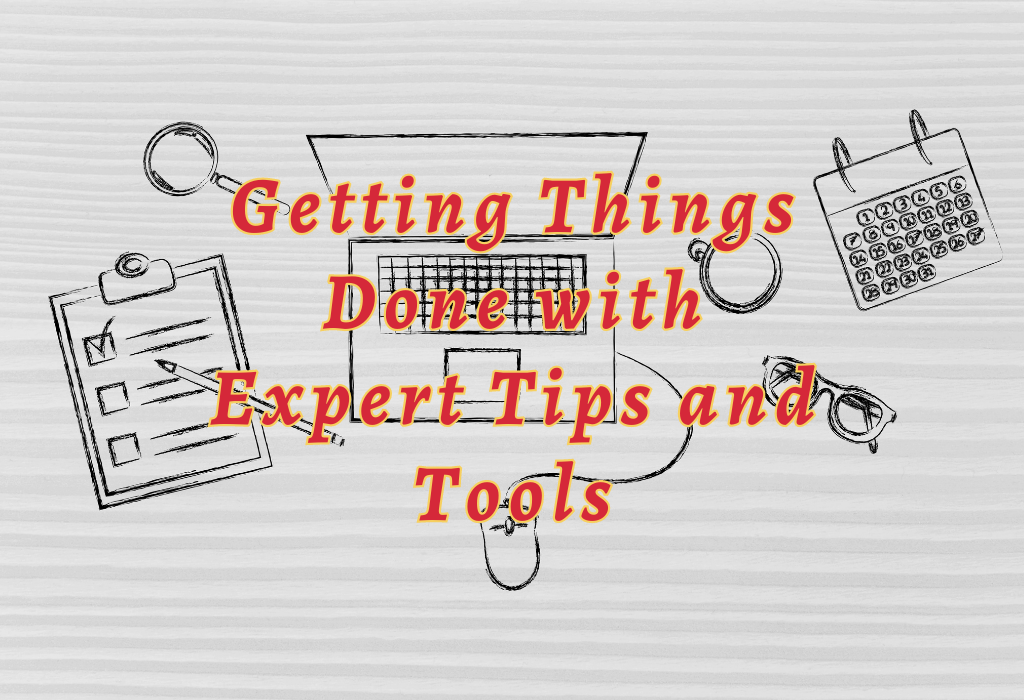Getting Things Done with Expert Tips and Tools
Are you a busy professional, entrepreneur, or freelancer struggling to stay on top of your workload? It’s easy to feel overwhelmed and stressed when juggling multiple tasks.
But don’t worry – with the right strategies for getting things done, and you can make the most of your time and optimize productivity.
In this article, we’ll discuss setting goals, effective time management techniques, managing distractions and interruptions, delegating tasks, and outsourcing work to achieve maximum efficiency in everything that needs doing. Getting things done is possible; let’s explore how.

What is Gtd? a Brief Overview
What is GTD? It stands for “Getting Things Done,” a productivity system created by David Allen. GTD aims to help busy professionals, entrepreneurs, and freelancers optimize their schedules, increase productivity, manage projects more effectively, and live a more fulfilling life.
The GTD approach consists of five simple activities for organizing mental clutter and completing tasks:
GTD demands an initial investment of time and effort to implement, but it pays off with regular use. You will no longer be concerned about missing an important deadline or job. Instead, you can respond to new information with composure and firmly prioritize your time.
Setting Goals
Setting goals is an essential part of any successful professional’s life. To ensure that you can achieve success, it is necessary to take the time to set clear objectives and establish deadlines.
The first step in setting goals is identifying your priorities. Ask yourself what matters most, and ensure those items are at the top of your list. This will help you stay focused on what’s essential so that you can allocate your resources accordingly. For example, if career advancement is a priority for you, then focus on tasks related to developing new skills or networking with potential employers.
Once you have identified your priorities, it’s time to create SMART goals – Specific, Measurable, Achievable, Relevant, and Time-bound – which will help keep you motivated and accountable for achieving them. Make sure each plan has a specific timeline attached so there is no ambiguity about when they should be completed. Additionally, break down large tasks into smaller chunks so that they seem more manageable and achievable over time.
Finally, establishing deadlines helps keep us motivated and accountable for our progress toward achieving our goals. When creating these timelines, consider both short-term (daily/weekly) and long-term (monthly/yearly) objectives to understand better how much work needs to be done to reach our desired outcome within the given timeframe. By setting realistic expectations, we can avoid feeling overwhelmed or discouraged due to a lack of progress or unexpected delays.
Setting goals is the first step to success, and with effective time management strategies, you can make sure that your goals are achievable.
Time Management Strategies
Time management strategies are essential for busy professionals who want to get things done efficiently and effectively. Scheduling your day is the first step in creating a successful time management plan. Start by making a list of all the tasks you need to complete each day, then prioritize them according to importance and urgency. Once you have identified your top priorities, create a daily schedule that allows enough time for each task while also allowing some flexibility in case something unexpected comes up.
Breaking tasks into manageable chunks makes them more achievable and less overwhelming. Break larger projects into smaller parts that can be completed one at a time over several days or weeks if necessary. This will help keep you focused on completing one task before moving on to the next without getting overwhelmed or distracted by other jobs that may arise during the process.
Utilizing productivity tools and apps can also be beneficial when it comes to managing your time wisely. Many different devices of tools are available, from project management software such as Trello or Asana to calendar apps like Google Calendar or Outlook Calendar which allow organizing events and appointments quickly meet and set reminders, so everything is remembered. Additionally, plenty of free online resources, such as Pomodoro timers, can help break up work sessions into shorter intervals with breaks in between for maximum efficiency throughout the day.
Time management strategies are essential for any busy professional, entrepreneur, or freelancer looking to increase productivity and live a more fulfilling life. By following the steps outlined above, you can set yourself up for success and start managing distractions and interruptions effectively.
Managing Distractions and Interruptions
Distractions and interruptions can be significant obstacles to getting things done as a professional. Limiting social media usage, turning off notifications and alerts, and working in blocks of time with breaks are all effective ways to manage distractions and stay focused on the task.
Social media is one of the biggest sources of distraction for professionals today. It’s easy to get sucked into scrolling through your feeds or engaging in conversations that don’t relate to work tasks. To limit this distraction, set specific times during the day when you will check social media accounts or even turn them off while you focus on other tasks.
Another way to reduce distractions is by disabling notifications from apps that aren’t related to work-related activities, such as emails, text messages, games, etc. This will help prevent unnecessary interruptions throughout the day so you can remain focused on completing important tasks without being distracted by incoming messages or updates from other applications.
By taking steps to limit distractions and interruptions, you can create an environment that allows you to focus on the tasks. Next, we’ll discuss how delegating tasks and outsourcing workload can help optimize your schedule.
Delegating Tasks and Outsourcing Workload
Professionals can save time by delegating and outsourcing work. First, find areas to outsource. Consider outsourcing administrative, customer service, or data entry work. After identifying these regions, assign responsibilities to the proper personnel. Ensure they are competent and experienced for the job and provide clear expectations and rules, so everyone is on the same page.
Workplace optimization boosts productivity at home and in the office. Start with organizing your desk and office, so you don’t waste time looking for things. Ergonomic furniture reduces bodily strain from long hours at a desk, improving focus and energy over time. Project management software can help you do more with less effort each day.
If you want to be productive all day, eating healthy meals and getting enough sleep are essential. Even a few minutes of mild stretching throughout the day can help us focus on our professional goals.
Finally, remaining motivated needs creating an inspiring environment with positive reminders of why we do what we do every day, and rewarding ourselves along the way makes success even more fulfilling. Setting reasonable expectations helps us avoid overwhelming ourselves. Small triumphs add up rapidly.
FAQs to Getting Things Done
There’s a reason why millions of people around the world swear that Getting Things Done changed their lives.
Conclusion
Getting things done is a process that requires dedication and consistency. You can make the most of your day-to-day activities by setting goals, utilizing time management strategies, managing distractions and interruptions, delegating tasks, and outsourcing workloads when necessary. With these tips in mind, you’ll be able to stay organized and productive while getting things done more efficiently.
Do you need help managing your time, staying productive, and making the most of each day? Schedule Makeover is here to help! Our expert tips and tools will provide you with actionable strategies for improving project management, boosting business productivity, optimizing your schedule and leading a more meaningful life. Get started now – take back control of your time today with Schedule Makeover!



